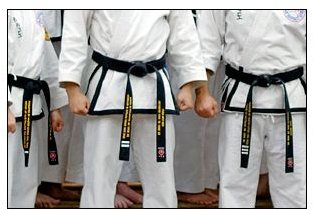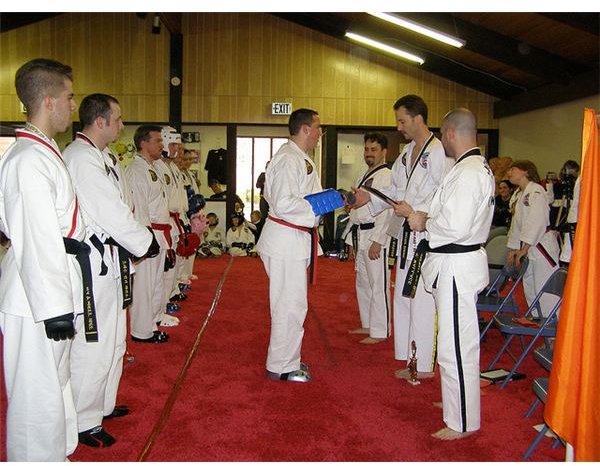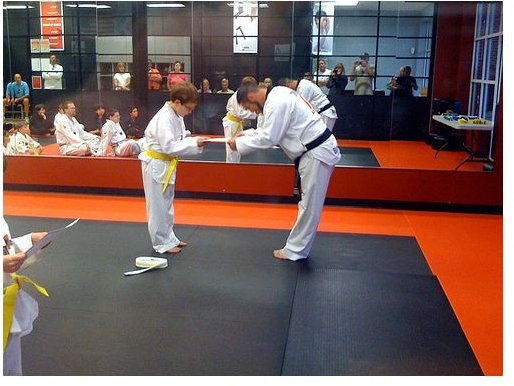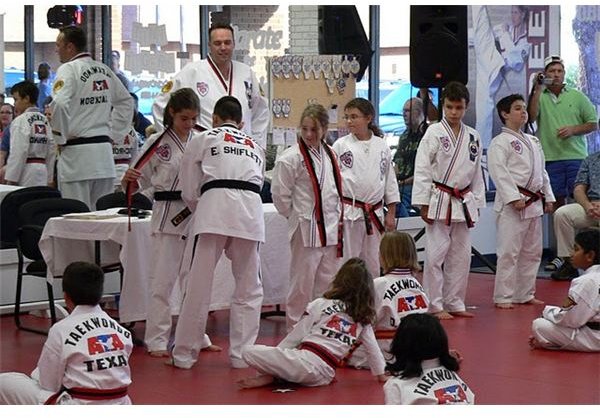Taekwondo Belt Colors
Pre-Judo Taekwondo Belt Rankings
In the time before Judo was invented as a martial art, taekwondo belt colors did not exist. Subak, as taekwondo was then known, was simply broken up in to students and instructors. It is only when tae kwon do as an art was reformed after its native Korea’s liberation from Japanese rule that these more modern additions to the art were made, ranking students in 10 geup, roughly translated to grade. Each geup represented a student becoming more advanced, and covered more difficult and skilful techniques then the previous. After this there are 9 Dan rankings for black belt members, each taking an increasingly long time to attain.
General Choi Hong Hi’s Original Taekwondo Belt Colors
General Choi Hong Hi designed the original Taekwondo Belt System when he unified the tae kwon do art in the 1950s when he began teaching it to the Korean military. The belt system as designed by General Choi Hong Hi is as follows:
- 10th Geup – White Belt: This reflects a student’s innocence and lack of knowledge.
- 8th Geup – Yellow Belt: Represents the earth, where the seed of taekwondo is just beginning to take root.
- 6th Geup – Green Belt: Green is seedling which the student is growing into in their study of taekwondo.
- 4th Geup – Blue Belt: Represents heaven and the sky, and a participant’s growing skills reaching toward the sky.
- 2nd Geup – Red Belt: Represents danger, in that a student now has the skills harm or kill their opponents, and must practice caution.
- 1st Dan – Black Belt: Represents the opposite of everything that a white belt was, the maturity and strength that the trained black belt will now pass on to their own students.
Modern ITF Taekwondo Belt Colors

International Taekwon-Do Federation, being derived more from General Hi Choi’s then the WTF, closely follows the traditional belt colors, adding in tags, stripes or tip colors between the belt’s described by the General. Note that some clubs substitute Brown for Red in the belt structure.
- 10th Geup – White Belt
- 9th Geup – White Belt with Yellow Tip/Tag/Stripe
- 8th Geup – Yellow Belt
- 7th Geup – Yellow Belt with Green Tip/Tag/Stripe
- 6th Geup – Green Belt
- 5th Geup – Green Belt with Blue Tip/Tag/Stripe
- 4th Geup – Blue Belt
- 3rd Geup – Blue Belt with Red Tip/Tag/Stripe
- 2nd Geup – Red Belt
- 1st Geup – Red Belt with Black Tip/Tag/Stripe
- 1st Dan – Black Belt
WTF Tae Kwon Do Belt Colors

The World Taekwondo Federation belts differ in that they add intermediate belts between those established by General Hi Choi. Generally separate grades are not described as geups, and in each belt color there can be several subgrades or degrees. Below are the typical tae kwon do belt colors for the WTF, with the meanings behind each of the names. The belts specified by Hi Choi have the same meanings as in his descriptions. It is important to note that some organizations will have these belts in different orders, and may have less or more belts than those present here.
- White Belt
- Yellow Belt
- Orange Belt: Represents the rising sun, which provides life to all living things.
- Green Belt
- Purple/Blue Belt (some organizations have these belts as separate)
- Brown Belt: The color of the ground – the ground represents mental and physical stability which all practitioners should have.
- Red Belt
- Black Belt
The Degree System for Tae Kwon Do Belt Colors

Some schools use a highly simplified tae kwon do belt colors system consisting of as little as four different colors, but each consisting of 3-4 degrees, generally numbered with tally marks. The colors in these belt systems can vary greatly, but the most common system is White, Yellow (three degrees), Blue (three degrees), Red (three degrees). Some clubs charge grading fees for each degree, others have these as simply time in rank.
The advantage to using the system is that it is more inclusive to students, who still feel as though they are part of, for example, the Blue belt group despite only being in the first rank of it.
However, especially for children, it can seem as though a student is on the same belt forever, leading to many students dropping out of the club, feeling they are not making any progress.
Each School is Different
The most important thing to note is that there is no set order or colors for tae kwon do belt colors to follow, or even for them to use belt colors at all. Even those specified by the ITF and WTF differ from club to club. It is not unheard for clubs to simply use white belts for beginners, yellow or green for students, and black for senior students and instructors.
References
Kellstrom, T. (n.d.). The Belt Colors of Taekwondo. In Article Click. Retrieved October 3, 2010, from https://www.articleclick.com/Article/The-Belt-Colors-Of-Taekwondo/743.
Nauta, B. (n.d.). Belt Requirements. In _General Taekwondo Informatio_n. Retrieved October 3, 2010, from https://www.barrel.net/belts.php.
Author Unknown. (n.d.). Belt System. In Unified Tae Kwon-Do. Retrieved October 3, 2010, from https://65.61.16.97/mt/Belts.asp.
